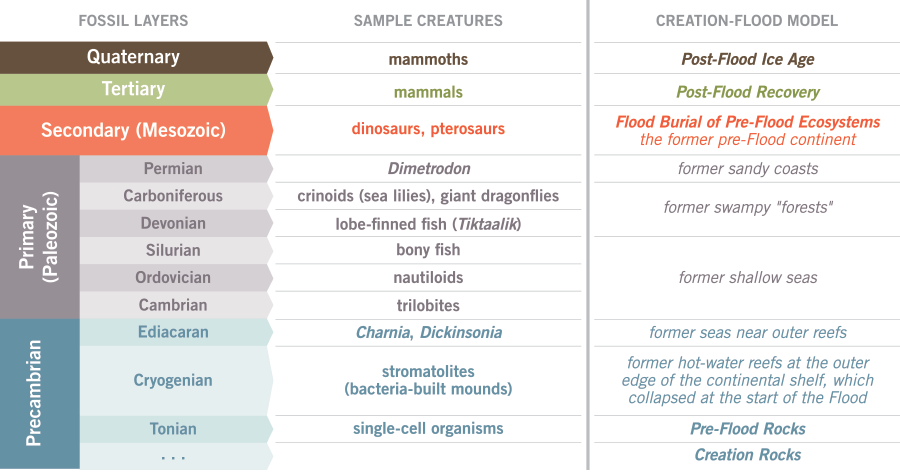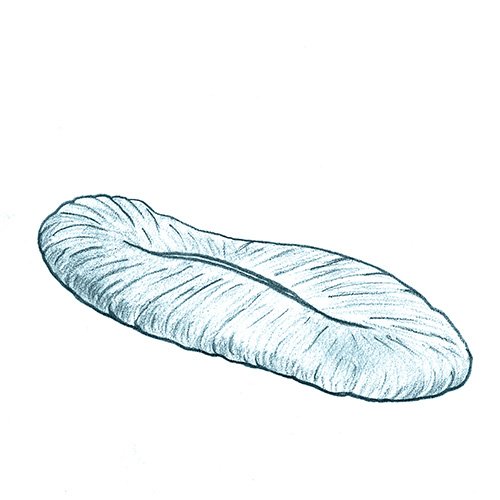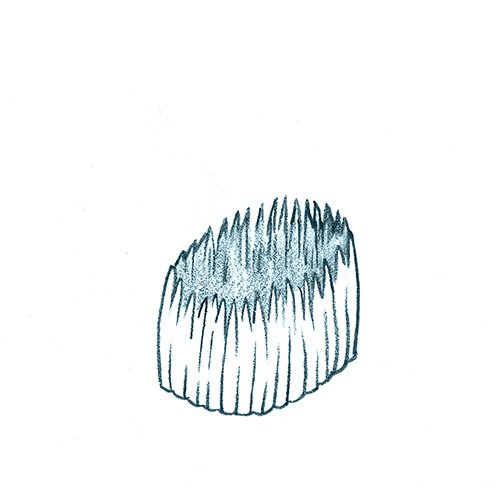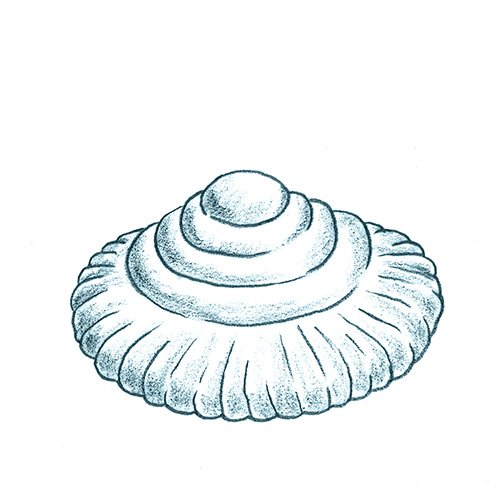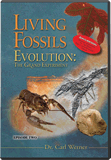
Mystery of the First Animals
Paleontology
What is the first animal at the bottom of the fossil record? Most people think it’s in the Cambrian, among the trilobites. Not so.
We’ve all heard about one of the great mysteries in paleontology: dinosaurs. They disappear from the fossil record without a trace. The disappearance of dinosaurs proved difficult for many scientists to explain until geological thinking became more comfortable with the idea of global catastrophes.
Dinosaurs get all the attention, but a different kind of mystery cloaks the other end of the fossil record: the Ediacaran.
For over a century, most people thought the lowest examples of animal life were in the Cambrian rocks because they contained the first life forms with “hard parts.” Think trilobites. Like most other people in his generation, Charles Darwin identified these rocks as the first examples of life in the fossil record. In the next hundred years or so, however, paleontologists found some strange fossils belonging to the lower Cambrian.
Or did they really belong to the lower Cambrian? Over the years, more fossils began to pop up in places like Canada, Namibia (Africa), and England. Finally, the mother lode was discovered in Australia’s remote Ediacara Hills in the 1940s. Paleontologists slowly began to realize that whole communities of creatures lay buried below the Cambrian. But then the next problem arose: how do you classify them? They were different from anything seen prior. The title of a 1984 Science article suggests some truth: “Alien Beings Here on Earth.” They were alien in the sense of having fundamental differences, yet still recognizable in terms of biological organization we find familiar.
How’d they get here, and where’d they go? Debates still rage among paleontologists. Were they “dead ends” of evolution, or is the fossil record too incomplete to reveal their similarities with creatures in the Cambrian? The creation model—which proposes that God created unique seafloor communities during Creation Week that were later destroyed during the Flood—may provide a clue.
New Territory
In 2004 geologists agreed to officially recognize the Ediacaran as its own geologic system, the first to be named in over 100 years. Technically speaking, geological systems are globally recognized portions of the geologic column containing identifiable associations of biotic communities. But it is understandable why these communities were overlooked. Most types of fossils are abundant or commonly seen, so they receive lots of attention. Others are in rocks, such as coal, that receive attention because of their economic importance. But Ediacaran fossils are not abundant and have no economic value. Worse, the best ones are concealed in remote places—often requiring hours of plane, train, boat, or even hovercraft travel!
Everyone—creationist or evolutionist—would love to better understand Ediacaran creatures, but information is limited so imaginations run wild. At different times Ediacaran creatures have been described as algae, fungi, lichens, unusual animals, or a completely new kingdom. Today, most paleontologists agree they were some sort of extinct animals, but the agreement ends there.
Since they have left such an incomplete record, the first step in solving their identity is to examine the rocks they are found within and what made them different.
That’s not easy with the Ediacaran. These creatures had soft bodies, so they often left only impressions in sand and mud, rather than the bodies themselves. Worse, the types of impressions left behind yield scarce biological information.
As we continue to find more Ediacaran sites, the geologic setting hasn’t gotten much clearer either. The kinds of creatures in the Ediacaran—and the conditions of their burial—differ widely from location to location.
So here is the first clue. If we look at the rocks beneath the Ediacaran, we see an assortment of jumbled sediments that provide hints about events before the burial of the Ediacaran. Secular geologists interpret these sediments as the product of a global ice age, and they refer to the layers as the Cryogenian (from the Greek word cryos, meaning “cold”). They say several “snowball earth” episodes engulfed the planet in glaciers and ice, wiping out most living things on the planet.
What is the creationist understanding of these rocks? So far, few creationists have worked with rocks equivalent to the Ediacaran. Drs. Steve Austin and Kurt Wise have reinterpreted a North American Cryogenian deposit (or ice-deposited sediments) as massive landslides resulting from the collapse of a continental margin at the start of the Flood.1 They argued that these rocks, called diamictites, mark the start of the Flood and include Ediacaran animals.
Dr. Wise also proposed in a 2003 paper that God created an astonishing variety of seafloor communities. This variety included deep-ocean and shallower-ocean communities surrounding continents. At the outer edge of these ocean regions were hydrothermal (or hot-spring) reefs, protecting these deep-water and shallow-water “lagoon” environments.2 Some of the unusual designs of the Ediacaran creatures may have helped them inhabit the deepest water of the lagoons fringing the continents.
Specialized Life (Biology)
This geological crime scene left some unusual victims. Their body forms no longer appear in the world today, so we can only infer their behavior and biology from the impressions they left in soft sediments.
Some had circular body plans, like Cyclomedusa, similar to modern sea anemones. Others had a leafy appearance, like the larger plant-looking Charnia. (It was named after the English forest where this fossil was discovered in 1956, settling the question once and for all that Precambrian rocks contain fossils of multicellular life.) Most paleontologists believe the plant-looking Charnia dwelt in deep water, where no sunlight reached, because of the type of rock it is found within. The closest analogy may be today’s “sea pens,” but we cannot tell.
Another common form, known as Dickinsonia, had a form best described as something like a worm (polycheate). Found in the Ediacara Hills in the 1940s, it still holds the record as the largest-known Ediacaran creature, reaching up to 1 yard (1 m) long.
What makes it so hard to understand these creatures? Unlike tube-shaped animals today, Ediacaran animals tended to be flat. Also, instead of having segments (think of an earthworm) some organisms like Dickinsonia had a “quilted” appearance; others like Charnia had strange “fractal” branching patterns on their surfaces.
One early hypothesis was that such body plans gave them a large external surface area that allowed them to absorb the maximum amount of nutrients directly from the water.
Why does a large surface area matter? Think of digestion. Mammals absorb food in long intestines that wind around and around to increase the surface area that comes into contact with food. Some Ediacaran organisms may have used a reverse strategy: instead of having complex internal organs that digested food after they ate, they absorbed nutrients directly onto flat, extended bodies. This lifestyle would be similar to that of flatworms we see today.
Other ideas on their biology are even stranger. Were some just single-celled organisms (albeit very large)? Were some like sand-filled sacks? The mystery—and fun—of these organisms is trying to understand them without the aid of exact living representatives. The point is that all of God’s designs—both living and extinct—have mystery, but common themes run throughout and aid us in learning the unknown.
Conclusion
An important lesson we should learn from the Ediacaran is the limits of our knowledge. No matter how much we learn about God’s creation, we are constantly surprised by its mysteries and marvels. Ediacaran animals are unlike, but not completely unlike, what we commonly see today. They are familiar enough to display the common hand of the Creator; they are dissimilar enough to illustrate the vast diversity of that same Creator. The Scripture certainly applies in this case: “It is the glory of God to conceal things, but the glory of kings is to search things out” (Proverbs 25:2).
Answers Magazine
April – June 2015
The eruption of Mount Saint Helens in the 1980s changed how we view catastrophe; on its thirty-fifth anniversary, we examine what we’ve learned since then.
Browse Issue SubscribeFootnotes
- “The Pre-Flood/Flood Boundary: As Defined in Grand Canyon, Arizona, and Eastern Mojave Desert, California,” Proceedings of the Third International Conference on Creationism (Pittsburgh, Pennsylvania: Creation Science Fellowship, 1994), 37–47.
- “The Hydrothermal Biome: A Pre-Flood Environment,” Proceedings of the Fifth International Conference on Creationism (Pittsburgh, Pennsylvania: Creation Science Fellowship, 2003), 359–370.
Recommended Resources

Answers in Genesis is an apologetics ministry, dedicated to helping Christians defend their faith and proclaim the good news of Jesus Christ.
- Customer Service 800.778.3390
- © 2024 Answers in Genesis


